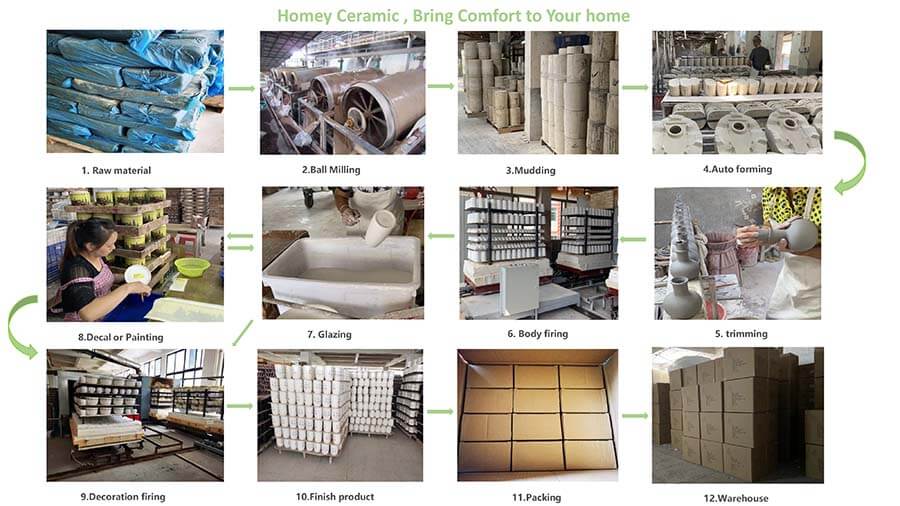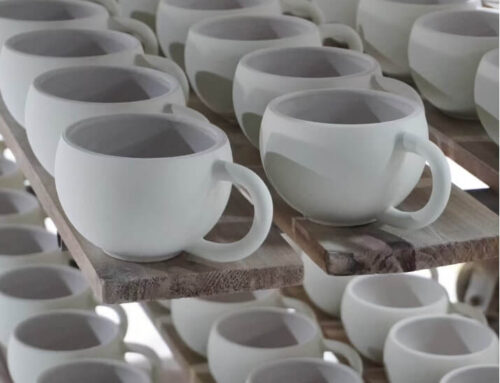Ceramic mugs that chip too easily. Vases that arrive in pieces. Holiday decorations stuck at customs.
If you’re importing ceramic goods, you’ve probably faced at least one of these problems. While ceramics are beautiful and in high demand—especially items like mugs, decorative vases, and seasonal figurines—they come with very specific challenges when it comes to global sourcing.
In this ceramic product import guide, we cover the top 10 challenges in importing ceramic goods and show you how to navigate them like a pro.
1. Navigating Ceramic Import Regulations
Different countries have different ceramic import regulations, and if you’re importing ceramic mugs, plates, or seasonal dinnerware, you’ll need to stay compliant.
-
In the US: products must meet FDA ceramic compliance if they’re used for food or drink.
-
In the EU: items must conform to EU ceramic standards, including tests for chemical migration.
Learn more about 2025 Ceramic Tableware Export Compliance
✅ Tip: Always ask your supplier to provide test reports before shipment.
2. Lead and Cadmium Testing in Ceramics
When importing ceramic goods, food-contact safety is vital. Glazes and decorative finishes must be tested for lead and cadmium content.
-
Required by FDA and EN 1388
-
Must pass leaching tests
-
Especially important for mugs, plates, and kitchenware
✅ Solution: Choose manufacturers who offer regular lead and cadmium testing for ceramics with certified lab reports.
3. Fragility and Packaging Risks
Ceramics are beautiful but fragile. That makes ceramic packaging for shipping one of the most critical steps.
Common risks:
-
Vases shattering in transit
-
Ornament parts breaking off
-
Handle mugs arriving chipped
What you need: Custom foam inserts, corner protection, double-wall cartons, and smart box layouts.
At Homey Ceramic, we offer tailored fragile goods shipping solutions for all our ceramic product lines.
4. High Shipping Costs for Heavy Items
Ceramic mugs, plant pots, and holiday houses can be heavy. This drives up shipping costs fast—especially with international freight.
To reduce freight charges:
-
Optimise packaging density
-
Combine SKUs in one container
-
Choose stackable designs
Need help with consolidation? Contact our team for efficient packing and container planning.
5. Customs Clearance Delays
Customs clearance for ceramics can be complicated. Improper HS codes, missing certificates, or inaccurate descriptions can result in expensive delays.
Our ceramic products are labelled and documented correctly to speed up the process.
Tip: If you’re unsure about how to import ceramics from China, work with suppliers experienced in customs clearance ceramics—like us.
6. MOQ and Production Lead Time
Many MOQ ceramic manufacturers require 1,000+ units per design. But what if you’re just testing a market?
⏳ Plus, ceramics take time:
-
Moulding & drying: 3–7 days
-
Glazing & firing: 2–3 cycles
-
Decoration: up to 5 days for hand-painting or decals
✅ Solution: Homey Ceramic offers low-MOQ customisation for mugs, vases, and festive items—starting at just 100pcs.
Explore our custom ceramic service

CUSTOM CASE
7. Quality Control Issues in Ceramic Products
Handmade ceramics often have slight variation—but when it becomes a ceramic product quality issue, it’s a problem.
Common issues:
-
Colour differences in mugs
-
Uneven glaze or rough spots
-
Cracks in fired holiday figurines
We support pre-shipment video checks, third-party QC, and sample confirmations—especially for seasonal items and exclusive collections.
8. Unreliable Ceramic Suppliers
From missed deadlines to unexpected outsourcing, ceramic supplier problems can destroy your schedule.
What to look for:
-
Transparent communication
-
Proven export experience
-
Certifications like BSCI, ISO
Want to know how we manage quality and timelines? Visit our factory process overview.

Ceramic making flow chart
9. Protecting Ceramic Design Rights
Launching a new mug shape? A unique Easter vase? A Santa Claus jar? Then you need to protect your ceramic design rights.
Key protections:
-
Signed NDA & exclusivity clauses
-
Trademark or design registration
-
Avoid sharing editable design files freely
At Homey Ceramic, your designs remain yours. We also support limited-edition exclusivity.
10. How to Import Ceramics from China Successfully
If you’re still wondering how to import ceramics from China without the headaches, here’s your quick checklist:
✅ Find a reliable factory
✅ Confirm product compliance (FDA / EU)
✅ Discuss MOQ and production schedule
✅ Approve packaging and shipment plan
✅ Plan customs paperwork early
Want a real partner? We’ve helped hundreds of small businesses, gift shops, and online retailers import ceramic mugs, vases, and festive decor—on time and on budget.
Let’s Simplify Your Ceramic Imports
At Homey Ceramic, we:
-
Offer low MOQs starting at 100pcs
-
Support FDA and EU-compliant ceramics
-
Provide full packaging and QC support
-
Help you avoid costly ceramic supplier problems
Ready to start importing ceramic mugs, vases, or decorations?
Get a Quote Now
Or browse our Ceramic Collections





